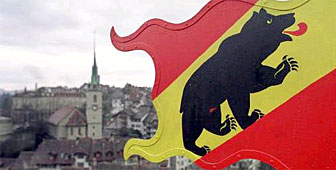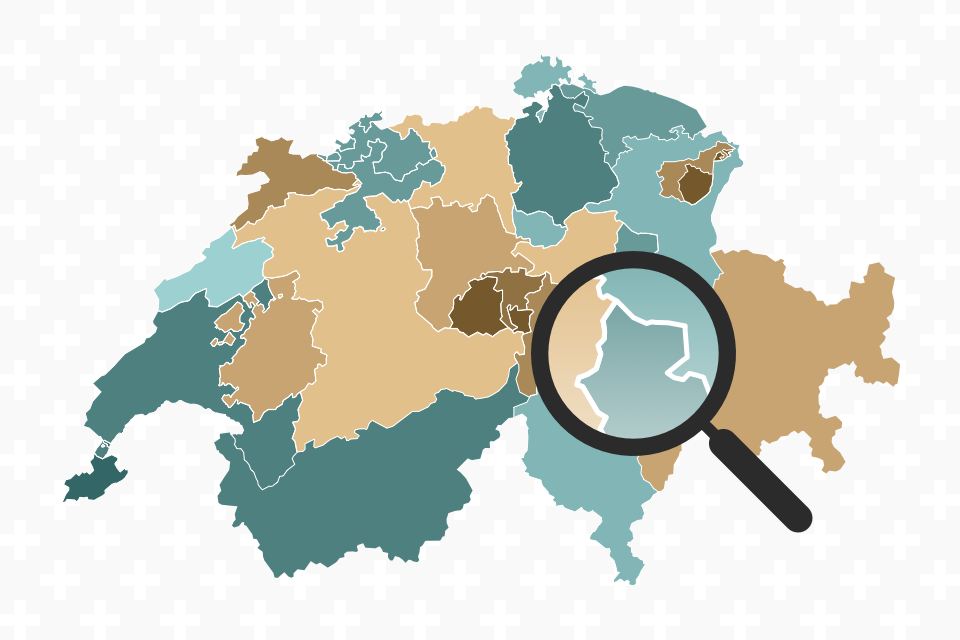Bern’s Burghers still thriving after 800 years

More than half of Switzerland's forests, much of its alpine meadowland and many of its most important buildings are owned by its 2,000 citizens' associations. Membership in these traditional associations is still a matter of pride for many Swiss and a source of both privilege and responsibility.
The “Bürgergemeinden” – called “Patriziate” in Ticino and “Bourgeoisie” in Valais – are legally incorporated entities, often dating back to the Middle Ages.
Over the centuries their members acquired power, wealth and influence. Today, although they no longer rule their communities, their wealth and influence remain.
In rural areas these associations often began with groups of farmers establishing rules for common grazing and wood-gathering. In the towns, skilled master craftsmen united to pry power away from feudal aristocrats.
Today these farmers’ and burghers’ associations continue to exist as separate legal bodies side by side with the municipalities in which their members live.
In Bern, for example, there is an Einwohnergemeinde – the city with its resident citizens – and a Burgergemeinde totalling 16,691 men, women and children with the inherited right to be called “Burghers of Bern.”
Representatives of the Swiss Union of Citizens’ Associations and Corporations (SVBK) are meeting in Basel this weekend. They will worry about the cost of maintaining their forests in the aftermath of the devastating Hurricane Lothar, which hit Switzerland in 1999, and debate their often very restrictive criteria for accepting new citizens.
Also on their minds will be the recent demise of Lucerne’s Bürgergemeinde, which was absorbed by the city. Now St Gallen’s citizens’ associations are also threatened with dissolution as a result of revisions in the cantonal constitution. It is possible that residents of the canton could vote to disband the historic associations.
“For 200 years, since the French Revolution spread to Switzerland and brought down its patrician governments, these associations have been under pressure to justify their existence,” explains Daniel Arn, a lawyer who is the general secretary of the SVBK.
“They are threatened by pragmatists, who think their wealth ought to become government property, and by idealists, who can’t understand why a medieval elite continues to exist in modern Switzerland.”
“Lucerne’s Bürgergemeinde was dissolved in part because the members didn’t use their wealth for the good of the community,” Arn said. “The same can’t be said of the burghers of Bern, however.”
Bern’s burghers are descendants – through the male line only – of families that began to settle the town as early as 1226. Their names, parentage, marriages and divorces are recorded in a 900-page book called the Burgerbuch.
Only 111 of the 1,500 families listed in the Burgerbuch 2000 pre-date the fall of Bern’s patrician government in 1798. The most important of these families were called “regimentsfähig,” which means they were permitted to govern the city.
Most of the current members of Bern’s Burgergemeinde are, however, not part of this history. At least 1,000 of them have bought membership rights in the prestigious association since 1900.
The tens of thousands of Swiss francs a newcomer may spend on becoming a Bern burgher are a professional investment, particularly for someone in the building trades. After all, the association owns around 10,000 acres of forest in and around Bern, 50 farms, and several thousand acres of building land, not to mention hundreds of private apartments and public buildings like the concert hall and Natural History Museum.
Another advantage to membership is social and financial assistance in times of trouble. Today, however, Bern’s famous Burgerspital and the other care facilities run by the Burgergemeinde are open to non-burghers as well.
Bern’s burghers feel that their continued existence as a local elite is justified by the millions of francs their association spends to provide social services, restore Bern’s historic buildings, preserve the city’s green belts, and support its cultural institutions.
“The city government has been in the red for 10 years, but we make sure that at least in some areas the Bernese don’t suffer because of it,” says the Burgergemeinde’s auditor Gérard Jenzer, whose ancestor became a burgher in 1607. “The Wankdorf stadium, the university library, the new Klee Museum: we’re involved with them all.”
Felix Wolffers, general secretary of Bern’s finance department, is quick to acknowledge the Burgergemeinde’s generosity. “They mostly put money into high culture – symphony, theatre, museums – which frees up taxpayers’ francs for other kinds of projects.”
In the days when Bern stretched from the Rhine to Geneva and was the largest city state north of the Alps, its governing burghers were called the Gnädige Herren (“Gracious Lords”) of Bern. Today the Gracious Lords’ descendants are still contributing money to make Bern a better place to live – and to make sure that no one decides to vote them out of existence.
As for the St Gallen burghers, time will tell if they survive or go the same way as the good burgers of Lucerne.
by Kim Hayes

In compliance with the JTI standards
More: SWI swissinfo.ch certified by the Journalism Trust Initiative








You can find an overview of ongoing debates with our journalists here . Please join us!
If you want to start a conversation about a topic raised in this article or want to report factual errors, email us at english@swissinfo.ch.